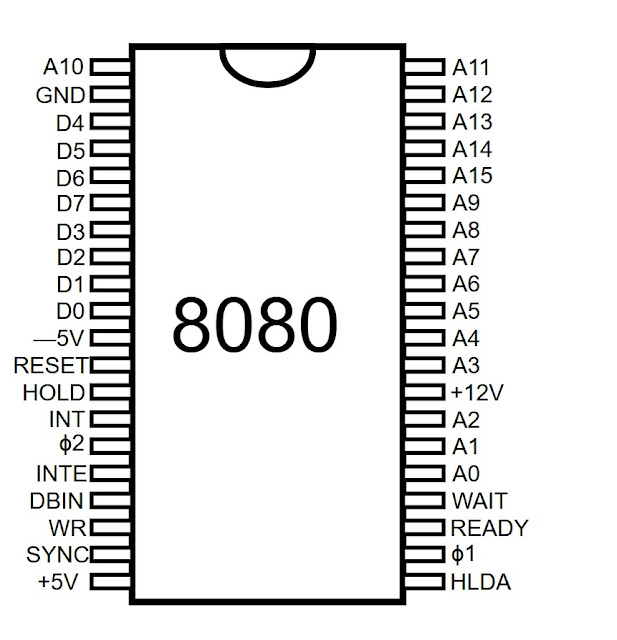The Intel 8080 processor was an 8-bit microprocessor introduced by the Intel Company in 1974. It was an important step for modern computer architecture and was used in various applications, such as microcontrollers and small computer systems.Intel 8080 Processor Pin Number:
The Intel 8080 processor had a total of 40 pins.
- Power supply (5V DC) is provided on Vcc pin.
- The GND pin is the ground connection.
They were used for various purposes. We can mainly divide these pins into three categories:
Voltage and Ground Pins (Vcc, GND):
Data Pins (D0-D7):
Address Pins (A0-A15):
Control Pin
M/IO (Memory/IO Select): It is used to select memory or input/output operations.
(Address Latch Enable): This is used to enable the address latch, so that the address pins are functioning properly.
RD (Read): Read signal, when the processor is reading data from memory or input/output.WR (Write): Write signal, when the processor is writing data to memory or input/output.
INT (Interrupt Request): An interrupt signal that tells the processor to perform a high priority task.SYNC (Synchronization): It is the synchronization signal, which is used to synchronize the work of the processor.
How Intel 8080 works:
The Intel 8080 processor works mainly using registers, bits, and control signals. Its working process is as follows:
operation code (Opcode) Fetching:The processor first fetches the operation code (Opcode) from memory, which tells it which command (eg add, subtract, load, store) to execute.
Data Fetching and Data Manipulation:The processor continues to fetch data (eg into registers or into memory) according to commands. This data is kept in various registers of the processor, and then necessary calculations are performed on this data.
Control Signals:The processor's control pins are used to communicate with external devices. As such, the RD and WR pins control data read and write operations. The M/IO signal is used to select memory or input/output devices.
Registers and Stack: The Intel 8080 had 7 registers (A, B, C, D, E, H, L), which were mainly used to store data.It used a stack pointer (SP) and program counter (PC), which helped control program location and specific sections of code.
Conditional jumps and branching:
The Intel 8080 was an important microprocessor and led to later more advanced processor designs and technologies, such as the Intel 8085 and Intel 8086, which formed the basis of modern computing.

